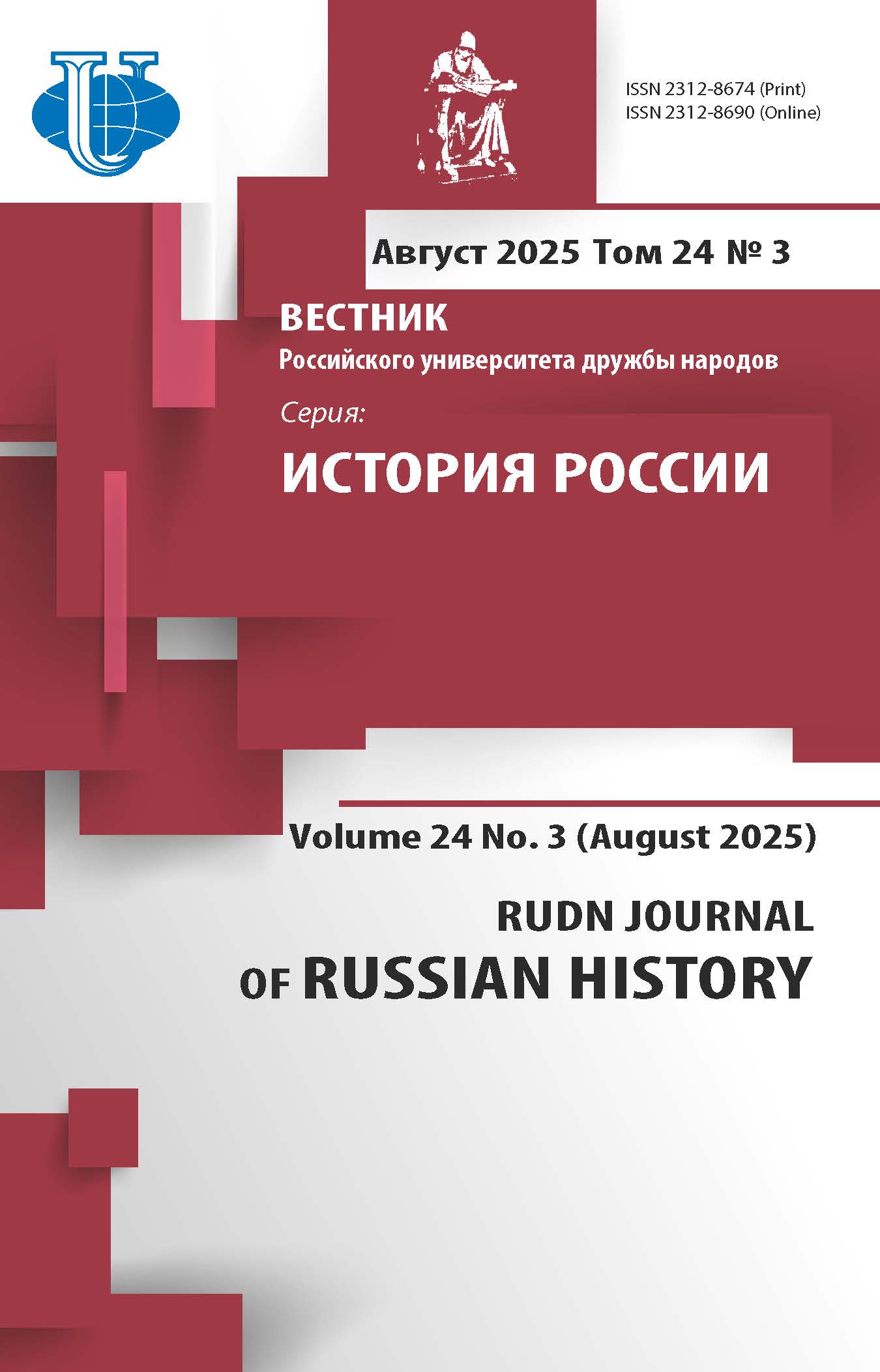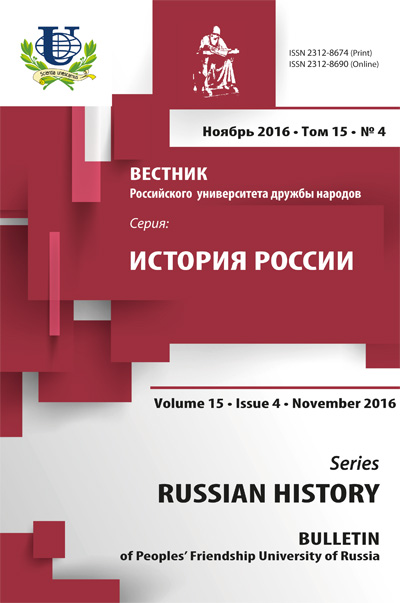ПРОМЫШЛЕННОСТЬ ЮЖНОЙ ОСЕТИИ В 20-40-Х ГГ. ХХ В.
- Авторы: Тадтаев Т.В.1
-
Учреждения:
- Юго-Осетинский государственный университет им. А.А. Тибилова
- Выпуск: Том 15, № 4 (2016)
- Страницы: 29-38
- Раздел: СТАТЬИ
- URL: https://journals.rudn.ru/russian-history/article/view/15294
- ID: 15294
- Дата ретрагирования: 27.11.2017
- Причина ретрагирования:
Ретракция публикации обусловлена выявлением дублирования публикации: Тадтаев Т.В. Экономическое развитие Южной Осетии в годы Советской власти // Вестник Московского городского педагогического университета. Серия: Исторические науки. 2015. № 4 (20). С. 67−79.
Статья ретрагируется (отзывается из печати) главным редактором (Протокол заседания редакционной коллегии журнала № 3 от 27 ноября 2017 г.) с согласия издателя.
Цитировать
Полный текст

Аннотация
В статье рассматривается промышленное развитие Юго-Осетинской автономной области в составе Грузинской ССР в 20-40-е гг. ХХ в. Проведенный анализ позволит установить, что Южная Осетия располагала минеральным сырьем, горными ископаемыми и нерудными богатствами, лесами. Исследуется не только промышленный потенциал Южной Осетии, но и ее достижения в создании предприятий. Особое внимание уделяется факторам, сдерживавшим промышленное развитие региона, включая политику грузинских властей в Тбилиси.
Ключевые слова
Об авторах
Таймураз Валерьевич Тадтаев
Юго-Осетинский государственный университет им. А.А. Тибилова
Email: tadtai@mail.ru
ул. Московская, 8, 100001, Республика Южная Осетия, г. Цхинвал
Список литературы
- Абаев В.Д. Экономическое развитие Юго-Осетии. Ч. III. Цхинвал: Госиздат Юго-Осетии, 1956. Ч. 3. 237 с.
- Блиев М.М. Южная Осетия в коллизиях российско-грузинских отношений. М.: Европа, 2006. 479 с.
- Гаглойти Ю.С., Джиоев М.К. Из истории осетино-грузинских взаимоотношений. Цхинвал: Ирыстон, 1995. 234 с.
- Дзагоева Е.П. К проблеме развития и размещения производственных сил в ЮО // Региональные проблемы экономики (на примере ЮО). Цхинвал: Ирыстон, 1981. 151 с.
- Дзагоева Е.П. Пути развития промышленности в Юго-Осетии. Цхинвал: Ирыстон, 1987. 140 с.
- КПСС в резолюциях и решениях съездов, конференций и пленумов ЦК. М.: Наука. 1954. Ч. 3. 254 с.
- Плиев Б.З. Строительство промышленности в ЮО в 20-х годах // Известия ЮОНИИ. Цхинвал: Академия Наук ГССР, 1964. Вып. 13. 323 с.
- Техов Б.В. Южная Осетия в период строительства социализма. Тбилиси: Мецниереба, 1981. 228 с.
- Чибиров Л.А. История Южных Осетин. Цхинвал: Ирыстон, 1990. 239 с.
- 15 лет Советской Юго-Осетии. Сталинир: Госиздат, 1935. 216 с.
- Восстановление и развитие народного хозяйства Юго-Осетии. Сборник документов и материалов (1921-1929 гг.). Сталинир: Госиздат Юго-Осетии. 1960. Т. 1. С. 170-171
- История индустриализации Грузинской ССР (1926-1941 гг.). Документы и материалы. Тбилиси: Менциереба. 1968. С. 407
Дополнительные файлы















